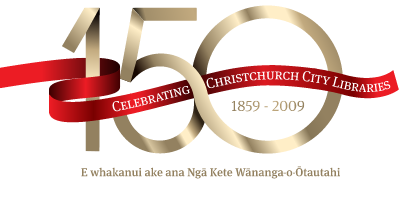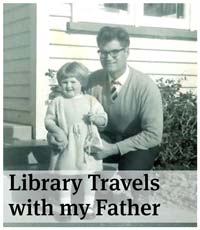Woolston Community Library, 1871-
Woolston Library was one of the earliest suburban libraries to open in Christchurch, in 1871, and against all odds, the library survived until it was badly damaged in the Christchurch earthquakes of 2010 and 2011. Almost from the beginning, the library’s committees fought a never-ending battle against failing finances, falling membership, unsuitable and disintegrating buildings, and threats of closure from the City Council, but somehow, the volunteers always managed to revive the institution at the last minute.
Beginnings
Woolston’s library was first proposed at a meeting of 21 men in the Christian Chapel in 1871. The meeting resolved that “it is highly desirable and conducive to the intellectual development of the youth and others in the neighbourhood, that a Public Library be established …” 1 . The Chapel agreed to provide space in its vestry, and to allow the library to open for two hours, one evening a week. A ten shillings a year subscription would allow readers to borrow one book a week. Under the presidency first of Edwin Bamford (1841-1928), and then of his brother, Henry Augustus Bamford (1845-1941), who were both lawyers, the library secured a ten pound subsidy from the Provincial Council to buy books, and by the end of 1872, the stock numbered some 300 volumes. The library was open three nights a week, and was considered a success for both adults and youth, particularly in keeping previously unruly young people off the streets.
In 1874, since the Christian Chapel was no longer able to host the library, the committee began fund raising in order to buy land on which to build a library. A concert was held on 26 August, but six months later, the library decided to incorporate with the Lower Heathcote Library which already had its own building. Both libraries received further grants from the Provincial government, rules were drafted and adopted on 1 April 1875, magazines and newspapers ordered, new books including a complete set of Dickens purchased, and arrangements made to open on Mondays, Wednesdays and Friday evenings from 6-10 pm. Unlike other community run libraries, Woolston Library decided to appoint a paid librarian, and John A. Denman (1852-1906) accepted the position at a salary of ten shillings a week. The new institution boasted 171 members on opening day.
Financial Crisis
Within a few years, the library was facing the first of many financial crises. Having increased the subscription to 3 shillings a quarter, membership had by 1878 dived to only 66, and the librarian had to be asked to accept a lower salary of 8 shillings a week. When a new librarian was appointed in 1880, he was offered a salary of 12 pounds a year. The Woolston Town Council paid 5 shillings a time to use the library rooms for meetings, fund raising entertainments were held, and various economies were introduced, but between October 1882 and October 1883, no committee meetings were held and the library was on the verge of closure.
A new librarian, Charles Freeman (1845-1931), was largely responsible for reinvigorating the library during the later 1880s. He worked without a salary, undertook the painting of the building, oversaw the installation of gas heating, and organised extensions to the building. A concert and ball was held to raise funds, with the Woolston Brass Band performing. The new extensions were opened in April 1886, and the extra rooms permitted a wider range of activities, including a debating club, card games, cribbage, darts, table tennis and draughts. In 1890, a piano was installed. Freeman, now being paid 12 pounds a year, was responsible for managing the library 3 evenings a week and the social rooms on Saturday evenings, ensuring that subscriptions were paid, cleaning the rooms, and attending committee and general meetings. To all intents and purposes, as the 1887 annual report acknowledged, “the Institution supplie[d] what [was] equivalent to a Working Men’s Club” (Hughes).
Another financial crisis loomed in 1911, following the government’s 1910 decision to drop public library grants, and the Town Council’s decision to hold its meetings elsewhere. However, the coronation of George V that year offered a reprieve. The government decided to commemorate the occasion by making grants to municipal bodies for the establishment of public libraries. In order to be eligible, ownership of the Woolston library was transferred to the Woolston Town Council, which made a grant of 250 pounds for a new building. This was matched pound for pound by the central government, and the Woolston Coronation Memorial Library in Ferry Road was opened on 27 April 1912.
Supported by the Canterbury Public Library
In 1921 Woolston Borough was incorporated into Christchurch City, and the library building was vested in the City Council. The City Librarian, Ernest Bell, arranged for Mrs J. Hastings, who had worked with him in London but recently moved to Christchurch, to undertake the work needed to “establish the library on a proper basis” 2 ; she carried out a thorough weed of the collection, and rearranged and catalogued the stock. Woolston Library retained a paid librarian until after World War II, when the work became entirely voluntary. Gradually, card evenings and other entertainments declined and the committee focused its energies solely on library services. Women became more actively involved as the years passed. Mrs Rosie was the first woman social committee member in 1914, and in 1923, Mrs Taylor became the first woman library committee member. By the 1950s, women were responsible for most of the work of the library, although the first woman president was not appointed until 1971, when Mrs Lois Stapleton was elected to the position. As in other suburban libraries, a free children’s library was opened in 1953, supported by Canterbury Public Library, with a group of mothers in charge of its services.
Centenary and After
Woolston Library celebrated its centenary in 1971, only the second library in Christchurch to reach this milestone3. In the following years, however, the library faced numerous threats to its existence. In 1977, the library was again on the brink of closure, with few members and a building in need of major renovation. The Council carried out some work, fixing dry rot and blocked down-pipes, but declined to undertake more expensive repairs unless there was evidence of public support for the institution. Under this incentive, the library suddenly boomed. Adult membership jumped to 140 and the numbers of volunteers increased by a third. Opening hours were extended to every afternoon and three nights per week 4.
Continuing Struggles
By 1982, however, things were again looking grim, and once again the Council spoke of closure5. Yet the committee, led by secretary Jack Holt, remained adamant that it “would maintain our presence and effectiveness in the community”, noting that it was the “sole public cultural amenity” in the district 6. And, under pressure from locals, the council gave in; councillors agreed that the library still served a community purpose and its demise should not be precipitated, at least until an alternative library service was available in the area. Maintenance on the exterior of the building was carried out, with materials paid for by the Council, and using periodic detention workers 7 . Battles over building maintenance continued through the 1980s, the library committee expressing its anger that the Council would not support a “flourishing” institution with more enthusiasm. By 1994, however, president Jack Meechan had to admit the library was not in fact, flourishing, although the collection numbered some 15,000 volumes and included all the latest magazines and paperbacks; he often sat for hours at his desk, with few borrowers, because the community had become so much more itinerant and school-aged children used their school libraries, rather than the children’s library 8 . Issues dropped from 19,745 a year in 1970 to only 6043 in 2005 (Christchurch City Libraries' statistics). Yet the library continues to survive, and as a journalist wrote in 2006, while it does “not have flash computers or ergonomically designed furniture”, it does have “old world charm”, with stained glass windows, a tongue-and-groove ceiling, wooden bookshelves, and even the traditional date stamp 9 .
In 2009 Woolston Library was open 6 hours each weekday, still filling a community need, particularly for elderly readers, because the nearest professional library service was some distance away at Eastgate Mall in Linwood. A team of volunteers at the library continued to serve about 500 adult and 285 child members on a daily basis.
Earthquake damage means the end
Sadly the library was badly damaged in the earthquakes which shook Christchurch in 2010 and 2011. After a team of volunteers scrambled to recover the books the building was demolished at the end of June 2011.
Sources
- Hughes, E. A short history of the Woolston public library, to commemorate its centenary in 1971, Christchurch, 1971
- Press, 1971-2009
- Sun, June 1922
Footnotes
- 1. Hughes, E. A short history of the Woolston public library, to commemorate its centenary in 1971, Christchurch, 1971, p. 1
- 2. Sun, June 1922
- 3. Press, 17 July 1971, p. 19
- 4. Press, 11 October 1977, p. 25
- 5. Press, 1 June 1982, p. 6
- 6. Press, 7 June 1982, p. 4
- 7. Press, 7 June 1982, p. 4, 22 June 1982, p. 6, 29 June 1982, p. 6, 14 December 1982, p. 6
- 8. Press, 20 September 1994, p. 1
- 9. Press, 25 January 2006, p. A11



